Recent studies focus on Metabolic Equivalent Task (MET) to measure levels of and areas of peoples’ physically active lifestyle because MET more readily translate peoples ’subjectively perceived physicality into standardized scores. MET also allows researchers to clearly understand the relationships between peoples’ physicality and psychological variables. Thus, the purpose of this study was to understand the levels of and areas of MET among Korean middle school students and to analyze the relationships between MET scores and physical self-efficacy. A total of 278 questionnaires were analyzed using SPSS 18.0. Exploratory factor analysis, descriptive analyses, and regression analyses indicated that middle school students’ physically active lifestyle occurred in the order school, leisure, housework, and transportation areas. Female students did more physical activity in the areas of housework and transportation, compared to male students. In contrary, male students did the majority of physical activity in the areas of school and leisure. Physical self-efficacy affected students’ MET scores, especially for vigorous intensity activity. With regard to gender differences, physical self-efficacy affected male students’ MET scores in the area of leisure while female students’ MET scores were affected in the areas of school and housework. The results were discussed in light of methodological and pedagogical perspectives, and future research suggestions were provided in the discussion.
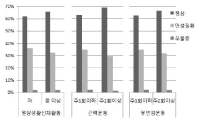
This study examined the association between physical activity (PA) and the prevalence of chronic disease and chronic depression. Additionally, the relationships between PA and health-related quality of life (HRQoL) among general population, categorized by healthy, chronic disease and depression were investigated. Cross-sectional data includes 9,739 participants (4,351 males, 5,659 females, over 19 years old) who completed physical activity, chronic disease and HRQoL questionnaires from The Fifth Korea National Health and Nutrition Examination Survey (KNHANES). Complex samples frequency, descriptive, cross-tab and logistic analysis were used. Estimated prevalence of chronic disease and depression were significantly different between PA levels and frequency. Based on odds ratios (OR) and 95% confidence intervals (CI), participating in lower levels of daily PA including less resistance and flexibility exercise were associated with an increased likelihood of chronic disease. Less frequency of resistance PA was also associated with an increased likelihood of depression. Estimated prevalence of HRQoL was different according to PA in the healthy and chronic disease populations. Adjusted OR and confidence intervals represented through lower levels of daily PA and less frequency of resistance PA were associated with an increased likelihood of poor HRQoL in the chronic disease population. No significant OR between PA and HRQoL in the depression population was observed.

PURPOSE This study explores injury attributions accepted by serious football participants, specifically intermediate and advanced players. METHODS Utilizing Q methodology, 25 Q-samples and 33 P-samples were selected, and Q-classification was conducted. Principal component factor analysis through the PQ method (vers. 2.35) was employed for data analysis, and types were interpreted and named based on the Q-sample with a Z-score of ±1.0 or higher. RESULTS Results categorized injury attributions accepted by the participants into four types: 'Type I: Facility/ Human Resource Responsibility Type,” 'Type II: Luck/Other Responsibility Type,” 'Type III: Self Responsibility Type,” and 'Type IV: Insufficient Safety Education.” This study provided academic and policy discussions by reclassifying four types according to their internal and external location and controllability. CONCLUSIONS In conclusion, this study emphasizes the relevance of all four types of injury attribution to policy considerations. Ensuring participants' right to participate in safe and enjoyable sports requires addressing facilities/human resources, education, and insurance as major policy components of sports safety.
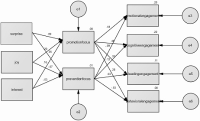
Purpose The purpose of this study was to find out the relationship between emotion and control focus and training involvement in games where elite shooters are late. Methods Thus, 228 elite shooters were selected and the research results were derived based on data analysis using discriminatory emotions, control focus, and training attendance scales. Results According to the analysis of the correlation between emotion, control focus, and training involvement, positive emotions of surprise, enjoyment, and interest showed a static relationship with improvement focus and training involvement, while negative emotions such as anger and guilt had a static relationship with prevention focus, but showed an inadequate relationship with training involvement. The multiple regression analysis between emotion and control focus showed that the improvement focus showed the most significant effect of enjoyment emotion, while the prevention focus showed that instability had the most effect on the prevention focus. Overall, the focus of improvement has been shown to be affected by training. Finally, it was found that positive sentiment had a positive effect on improvement focus and training involvement, while negative sentiment affected prevention focus and reduced cognitive involvement. Conclusions Positive sentiment toward the competition has been confirmed to enhance training participation by strengthening the focus of improvement, but negative sentiment has been shown to enhance the focus of prevention, reducing cognitive involvement.

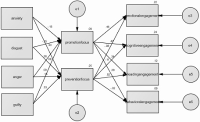

Purpose The purpose of this study was to provide useful information on the improvement of performance by measured the psychological-physiological stresses experienced by elite shooters during a competition. Methods Thirty-eight elite shooters participated in this study (Male = 13, Female = 25). Psychological stress was measured and used for this study based on the stress factors found in the elite target stress study by Park(2015). The cortisol, a physiological stress hormone, was measured using saliva. Results The reliability of the psychological stress sub-factor pre-post analysis results showed no statistically significant. The concentration of cortisol measured on the day before the competition (0.1704 µg/dL) significantly increased immediately before the competition (0.3558 µg/dL). Cortisol immediately before the competition showed negative correlation (r=-.361, p=.036) with the competition score, and the regression variable of cortisol was 13%. Conclusions In this study, physiological stress had a negative effect on elite shooters performance compared to psychological stress.

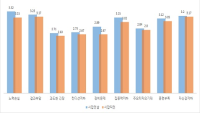

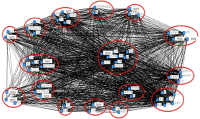
Purpose This study reviewed the seriousness of the Match-fixing through the mixed research methods of the big data analysis (quantitative) and the focus group interview (qualitative) using the keyword, ‘Match-fixing’ and discusses the cautious and comprehensive basic direction for coping with negative issues and preventing recurrence. Methods For the quantitative research method, Naver and Daum were used as the analysis channel and the main keywords selected for the data search were ‘Match-fixing’ and ‘Match-fixing+(measures/eradication/solution)’. The data collection period was limited from January 1, 2010 to December 31, 2016. In addition, for the qualitative research method, 6 homogeneous groups (experience, interest, knowledge) related to the research topic were constructed and interviewed using purposive(intentional) sampling. Results First, five factors (emotion, participant, cause, punishment, countermeasure) were categorized by big data analysis. Second, through Focus Croup interview, additional keywords for three factors (emotion, participant, countermeasure) were derived. Conclusions Therefore, it is required that various preventive measures such as emotional reward for negative emotion, preventive and ethical education, advancement of sports, establishment of Match fixing committee, Expert training are needed.

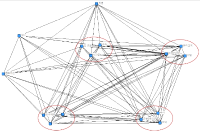

Purpose There is a growing number of potential demand on experiential horse riding tourism due to the expand of tourism and sports industries, however the experiential horse riding clubs are operating inefficiently. Therefore the purpose of this study is to investigate implicity importance of horse riding club’s selection attributes and analyze factors affecting positive effect on market share thereby find the way to improve operating system. Methods The survey was done among 258 horse riding tourism customers of Jeju, Gyeonggi, and Gyeongbuk provinces, and conjoint analysis to figure out the relative importance of selection attributes, and simulation to predict the market share of experiential horse riding were conducted. Results The results are as follows. Cost was the most important factor when selecting horse riding club and program, location, staff were followed by. Also, “The club that serves various activities with horse riding program at 10,000won where the condition of road and parking lot are good” had the best market share. Conclusion This study suggested the effective and efficient manners to operate the horse riding club and the political implication.
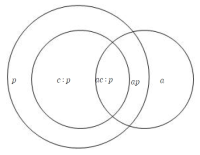
The purpose of this study was (1) to analyze judges’ evaluation on figure skating performance and statistical analysis and (2) to make recommendation to improve judges' performance. Data were 62 figure skaters’ scores from Senior Woman 1 Group Part at 2015 The National Figure Skating Championship in Korea. Data of presentation part in Short Program were analyzed. Presentation part consists of skating skills, transitions/linking footwork/movement, performance/execution, choreography/composition and interpretation. Nine judges evaluate skater's presentation with the score 10.0 for each factor. Generalizability theory, descriptive statistics and ANOVA were utilized. Results showed that generalizability coefficient of presentation part was over 0.9, therefore stable reliability was secured. The error source about players has more significant impact to evaluation than other error sources. Generalizability coefficient was stable when reducing the number of judges up to 2. Also, judges generally represented aspects of similar evaluation, but different aspects appeared on a few judges’ assessment in the components of presentation. Discussions were provided in terms of the reliability of the judging method for the presentation part of figure skating and the effective measurement condition.

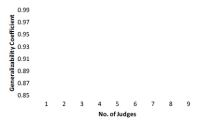
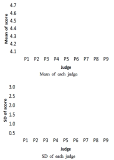
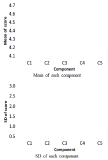
The purpose of this study was to examine the current status of school sport club(SSC) participation and to explore relationship between school sport participation and positive youth development. In order to do this, a survey was conducted with 403 elementary, middle, and high school teachers who are currently taking charge of SSCs, and also individual interviews were conducted with 22 students. In addition, the youths' developmental asset questionnaire was administered with 412 middle school students. The survey results from 403 teachers showed that SSCs have potential to contribute to positive youth development because teachers are placing an emphasis on character development as well as physical and social development through SSC activities. In addition, participants who regularly participate in physical activities had higher internal and external developmental assets than non-participants or irregular participants. Specifically, students participated in SSC more than twice a week had higher internal and external assets than students participate once a week. In addition, participants who engage more than one hour per session had higher internal and external assets except constructive use of time and social competence. Discussion and implications for organizing SSCs to provide developmental contexts and contents for positive youth development were provided.
PURPOSE The purpose of this study was to develop a non-face-to-face self-regulation training program for middle and high school student-athletes through the conduct of a group online video counseling session, as well as to verify the effectiveness of such a tool. METHODS Based on the models of Zimmerman(2000) and Han Si-wan (2008), the 12-session non-face-to-face self-regulation training program consisting of interactions involving cognitive, emotional, and behavioral factors was developed and used on a 16-member experimental group. Additionally, self-regulation and mental toughness questionnaires were given to each member before and after the program, and the results were compared with the results of a 17-member control group. Since a qualitative evaluation was conducted, recorded training contents were organized into a text file; after which, a step-by-step coding procedure was performed, and then meanings and themes were identified and categorized. RESULTS Quantitative analysis found that the volitional inhibition mode of the control group decreased significantly; this was in comparison to the increase in the self-regulation mode of the experimental group. In addition, among the seven sub-factors of the mental strength test of the experimental group, a significant increase was found in the post-test of self-belief, attention control, emotional regulation, resilience, and optimism factors. As a result of qualitative data analysis, they complained of difficulties in the early stages of participation, but gradually recognized their problems and searched for changes, showed changes in cognition, emotion, and behavior as they approached the end of the study period. CONCLUSIONS It can be said that the non-face-to-face self-regulation training program helped student athletes improve their school life and performance by driving positive cognitive, emotional, and behavioral changes.